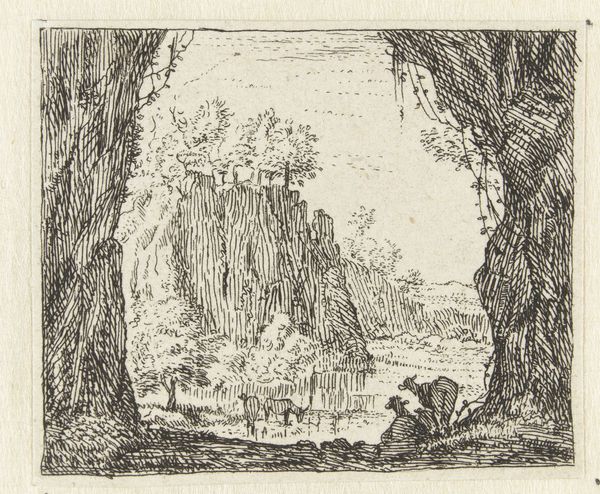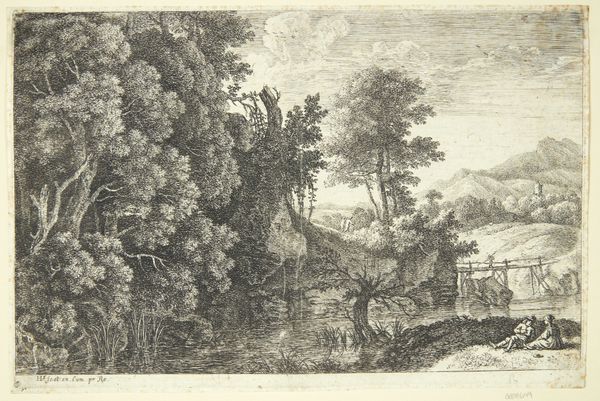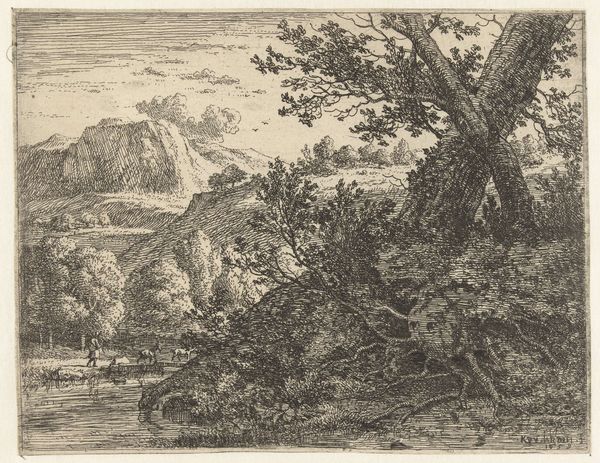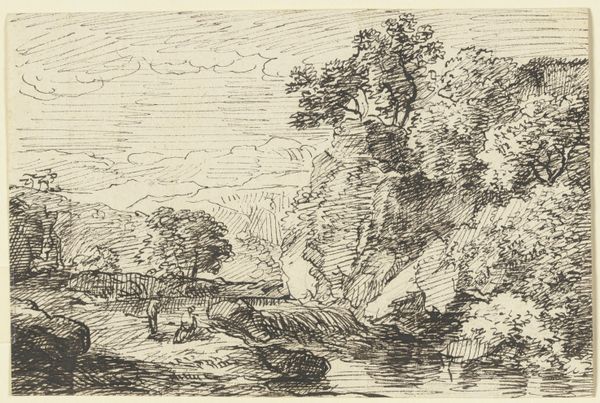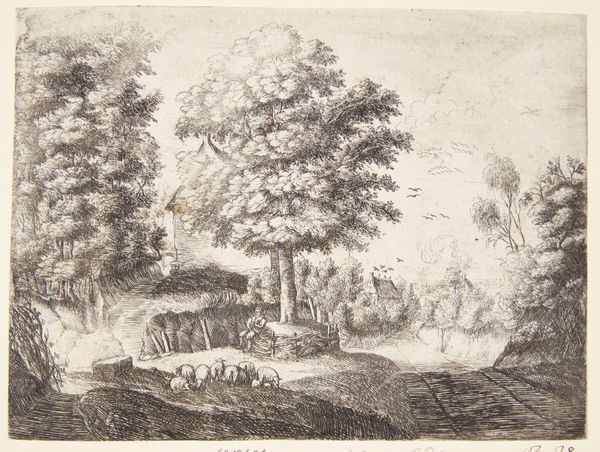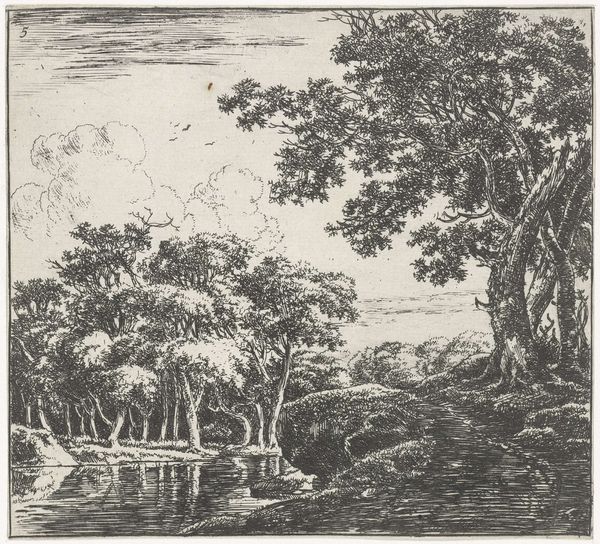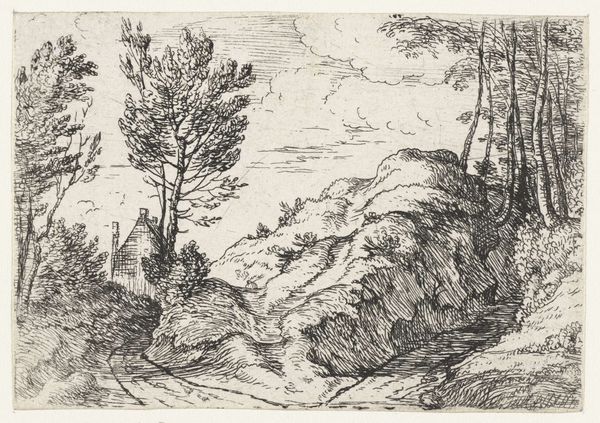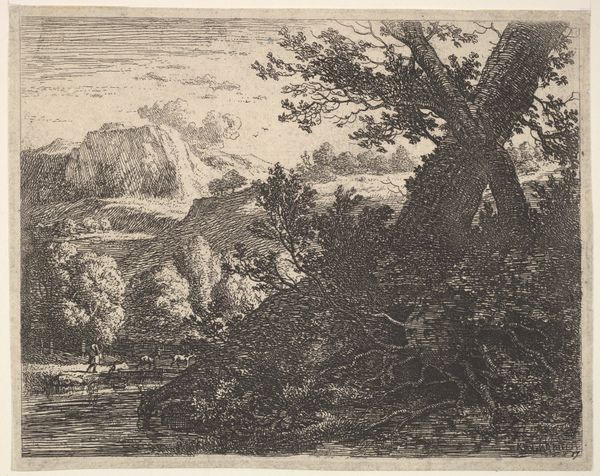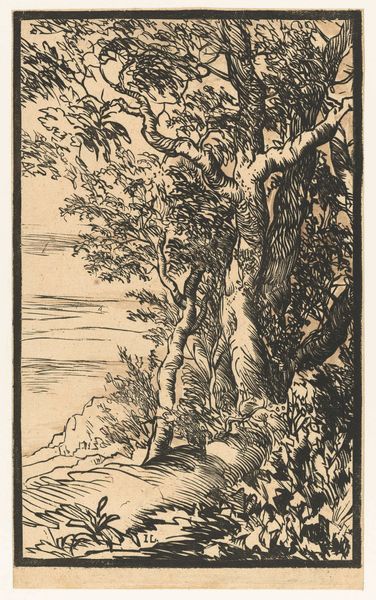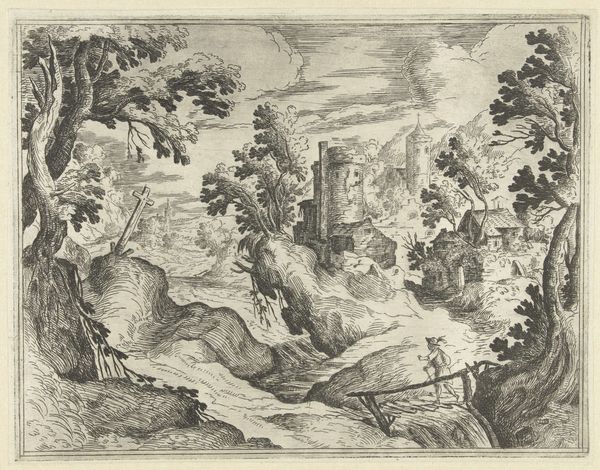
drawing, ink
#
pen and ink
#
drawing
#
ink drawing
#
baroque
#
pen drawing
#
landscape
#
figuration
#
ink
#
line
#
pen work
Dimensions: height 47 mm, width 57 mm
Copyright: Rijks Museum: Open Domain
Curator: I’m struck by how much visual information Karel du Jardin manages to convey with such economy of means. Editor: The overall impression is indeed immediate; my initial sense is of a pastoral tranquility tinged with a subtle melancholy. Curator: Quite. This drawing, entitled “Italianiserend landschap met geiten bij een rivier,” created between 1652 and 1659, epitomizes the Dutch Italianate landscape tradition, rendered meticulously in pen and ink. We can see how du Jardin deftly employs line to create a layered composition. Editor: Look at the framing device of the trees—they plunge the viewer right into the center of the work, past those gently grazing goats. The contrasting textures achieved simply through the density and directionality of line are remarkable, wouldn’t you say? Curator: Absolutely. Note the romanticizing of peasant life; there’s an undeniable echo of larger socio-political structures at play here, reflecting both a nostalgia for a pre-industrial existence and a commentary on burgeoning mercantilism. Editor: I concede the romanticism, but my focus is on how the composition directs the eye; notice the mirroring effect between the verticality of the rock formations in the middle ground and the stark verticals of the framing trees? A certain visual harmony prevails. Curator: But that visual harmony masks a deeper ideological play. These idealized landscapes often served to legitimize specific social hierarchies, portraying rural life as inherently simple and virtuous, thereby justifying inequalities. Editor: That’s plausible, but I still marvel at the intrinsic visual rhythms and the way the artist orchestrates the interplay between light and shadow through such masterful inkwork. It evokes a powerful sense of spatial depth. Curator: Indeed. Even today, understanding the historical context surrounding artworks such as this provides insight into past systems. This pastoral vision then becomes a rich subject for reflection on societal power. Editor: While I appreciate the historical context you provided, I think I still find the pure formalism to be quite strong here.
Comments
No comments
Be the first to comment and join the conversation on the ultimate creative platform.
